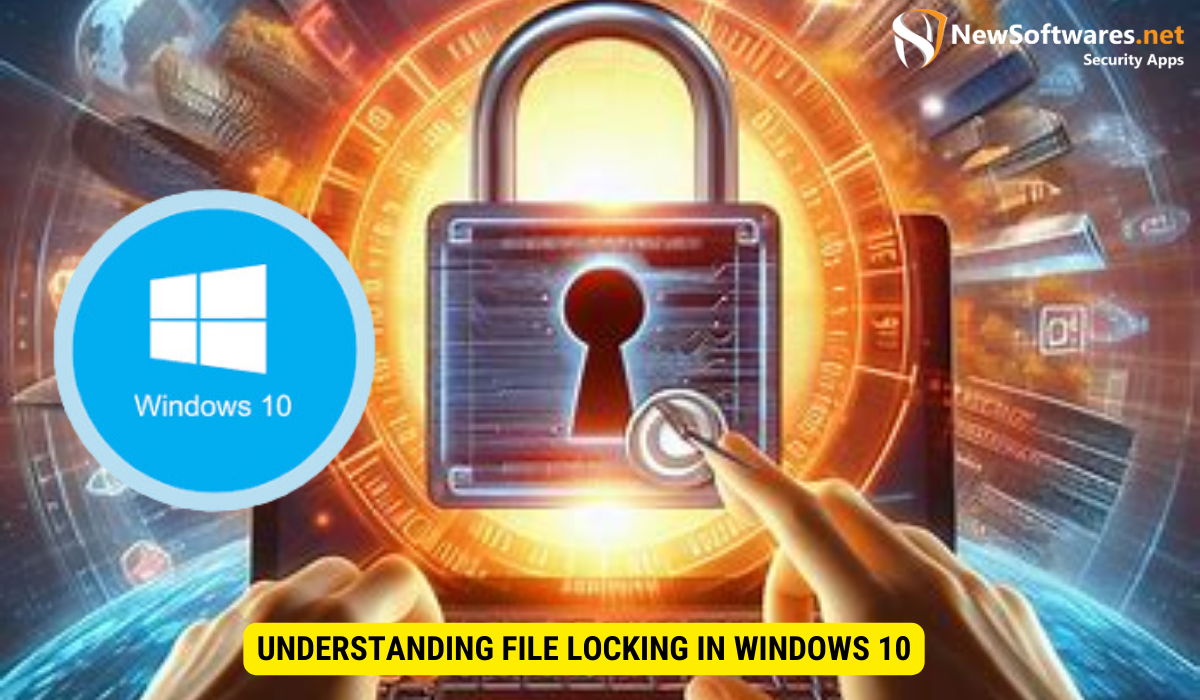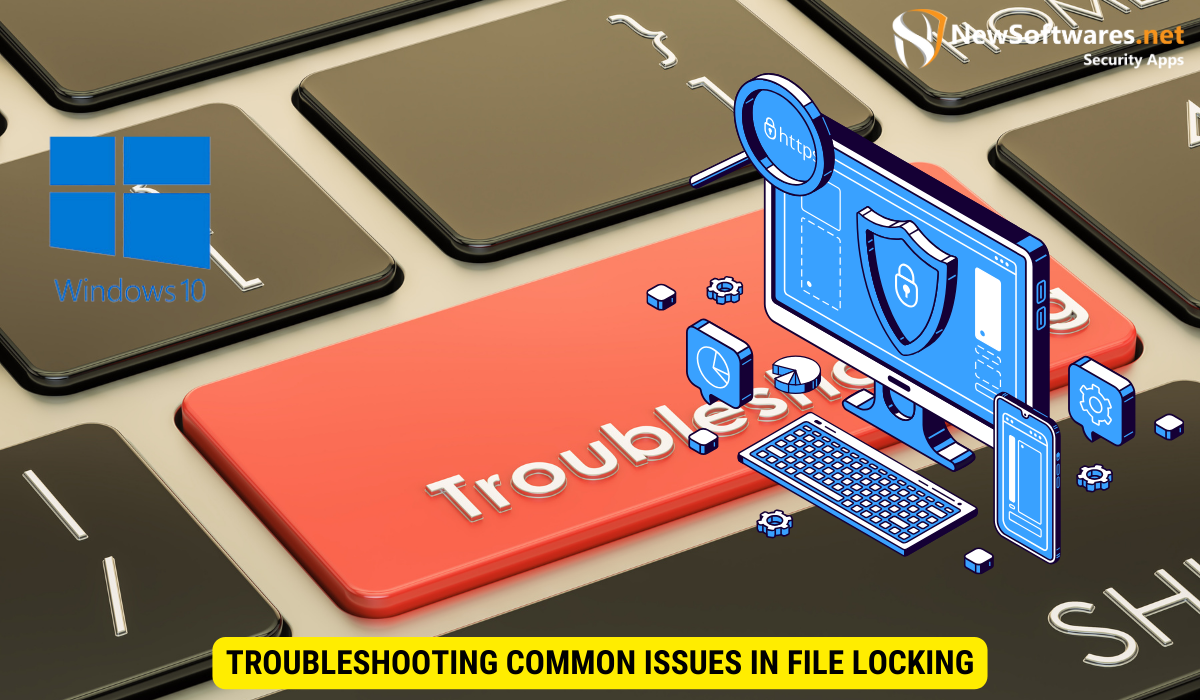You can lock files on Windows 10 using built-in features like encryption and password protection, or opt for third-party software for added security.
Windows 10 offers several options for locking files and protecting your sensitive information. Understanding file locking and how to properly secure your files is essential for maintaining privacy and preventing unauthorized access. Together, we will explore the importance of file locking, the basic concepts involved, and various methods you can use to lock your files on Windows 10.
Understanding File Locking in Windows 10

File locking is a security measure that restricts access to specific files, ensuring that only authorized users can view or modify them. This feature is particularly important when dealing with confidential documents or sensitive information that you want to keep safe from prying eyes.
When a file is locked, it essentially puts a virtual padlock on it, preventing unauthorized users from opening, editing, or deleting it. This is especially crucial in shared environments where multiple users have access to the same files, as it helps maintain data integrity and confidentiality.
Importance of File Locking
File locking is crucial for protecting your personal and professional data from unauthorized access. It helps prevent accidental deletion or modification of files and ensures that only trusted users can make changes to critical information.
Imagine a scenario where sensitive financial documents are stored on a shared network drive. Without proper file locking mechanisms in place, any user with access to that drive could potentially tamper with or delete important files, leading to severe consequences for the organization.
Basic Concepts of File Locking
Before we delve into the methods of file locking on Windows 10, it’s important to understand a few key concepts:
- File Permissions: Every file in Windows 10 has permissions that determine who can access and modify it. These permissions can be set for individual users or groups, providing granular control over file access.
- User Accounts: Windows 10 operates on a user account system, ensuring that each user has their own private space and specific permissions for accessing files and folders.
- Encryption: Encryption is the process of converting data into a form that can only be deciphered by authorized parties who possess the corresponding decryption key. It provides an additional layer of security for your locked files.
File locking goes hand in hand with encryption to offer a comprehensive approach to safeguarding your data. By encrypting locked files, even if an unauthorized user gains access to them, the content remains indecipherable without the encryption key, adding an extra layer of protection against data breaches.
Preparing Your Files for Locking
Before you start locking your files, it’s important to identify which files require extra protection and organize them in a way that makes them easily accessible when needed. Ensuring the security of sensitive information is crucial in today’s digital age, where data breaches are a constant threat.
When determining which files to lock, consider not only the content but also the potential consequences of unauthorized access. Files containing proprietary information, intellectual property, or sensitive personal data should be prioritized for locking to prevent any misuse or leakage.
Identifying Which Files to Lock
Begin by analyzing the sensitivity of your files. Consider which documents or data contain confidential information that should only be accessed by specific individuals. Financial records, legal documents, and personal information are common examples of files that should be locked. Remember, it’s better to err on the side of caution when deciding which files to secure.
Take into account any regulatory requirements or industry standards that mandate the protection of certain types of information. Compliance with data protection laws is not only a legal obligation but also a best practice in safeguarding sensitive data from unauthorized exposure.
Organizing Your Files for Easy Access
Create separate folders for different types of locked files to keep them organized. This will help you quickly locate and access specific files when needed. Additionally, consider creating a master folder to centralize all your locked files, making it easier to manage and secure them. Maintaining a clear and logical folder structure will streamline your file locking process and enhance overall efficiency.
Implement a naming convention for your locked files that is descriptive yet concise. This will facilitate quick identification of file contents without the need to open each file individually. Adding dates or version numbers to file names can also aid in tracking changes and ensuring you are working with the most up-to-date information.
Using Built-in Windows 10 Features for File Locking
Windows 10 provides built-in features that can be used to lock files and enhance their security. These features include file encryption and password protection.
When it comes to file security, Windows 10 offers a range of options that can help users protect their sensitive data from unauthorized access. In addition to encryption and password protection, users can also take advantage of features like file permissions and user account control to further bolster the security of their files.
File Encryption with Windows 10
Encrypting your files adds an extra layer of protection by scrambling the data in a way that can only be deciphered with the correct encryption key. Windows 10 offers BitLocker, a built-in encryption tool, for this purpose. To encrypt a file or folder, simply right-click on it, select “Properties,” and enable the encryption option.
BitLocker not only encrypts individual files but can also encrypt entire drives, providing comprehensive protection for all data stored on them. This feature is particularly useful for users who need to secure large volumes of data or sensitive information.
Password Protecting Your Files
Another way to lock files on Windows 10 is through password protection. You can assign individual passwords to specific files or compress multiple files into a password-protected ZIP archive using built-in tools or third-party software.
By setting strong and unique passwords for files, users can prevent unauthorized access even if the files fall into the wrong hands. It is important to choose passwords that are not easily guessable and to store them securely to maintain the integrity of the protection.
Third-Party Software for File Locking
In addition to the built-in features, there are numerous third-party software options available for file locking on Windows 10. These tools often offer advanced security features and additional customization options.
Choosing the Right Software
When selecting third-party software for file locking, consider your specific requirements and the level of security you need. Look for reputable software providers that offer reliable encryption algorithms and have positive user reviews.
How to Use Third-Party Software for File Locking
Once you have chosen the appropriate third-party software for file locking, follow the provided instructions to install and configure it on your Windows 10 system. Depending on the software, you can expect a user-friendly interface that allows you to easily select and lock files with just a few clicks.
Troubleshooting Common Issues in File Locking

While file locking enhances security, it can sometimes lead to unintended consequences or issues. Here are a couple of common problems you may encounter and some potential solutions:
Dealing with Forgotten Passwords
If you forget the password for a locked file, it can be challenging to regain access. To avoid this situation, create passwords that are memorable but difficult to guess. Additionally, consider using password management tools to securely store and retrieve your passwords.
Resolving File Access Issues
Sometimes, after locking a file, you may encounter issues accessing or modifying it. In such cases, double-check the file permissions to ensure that you have the necessary rights to access the file. If needed, consult the Windows 10 documentation or seek assistance from your system administrator.
Key Takeaways
- File locking is crucial for safeguarding confidential and sensitive information from unauthorized access.
- Windows 10 offers built-in features such as file encryption and password protection for locking files.
- Third-party software options provide advanced security features and customization options for file locking.
- Proper organization and identification of files to be locked simplify the locking process and ensure easy access.
- Regularly update and manage software and passwords to maintain optimal file locking security.
FAQs
Can I unlock a locked file on Windows 10 without the password?
No, unlocking a locked file on Windows 10 without the password is not possible. The file locking mechanisms in place are designed to prevent unauthorized access, and without the correct password or encryption key, the file cannot be unlocked.
Will locking a file make it completely immune to malware?
While file locking can enhance security, it does not provide complete immunity to malware. File locking primarily protects against unauthorized access, but other security measures like antivirus software and safe browsing practices are essential for comprehensive malware protection.
Can I share locked files with others?
Sharing locked files with others can be challenging, especially if they do not have the necessary credentials or passwords. To share locked files securely, consider using file-sharing platforms that offer encryption or password protection options.
How often should I update my locked file passwords?
Regularly updating your locked file passwords is a good security practice. Aim to change passwords at least every three to six months or whenever there is a potential security risk or breach.
Are file locking software options compatible with all versions of Windows 10?
Most file locking software options are designed to be compatible with multiple versions of Windows, including Windows 10. However, it is always recommended to check the software’s system requirements and compatibility before installation.
Conclusion
File locking is an essential practice for ensuring the security and privacy of your sensitive information on Windows 10. By understanding the concepts and methods of file locking and utilizing the built-in features or third-party software options, you can protect your files from unauthorized access and potential data breaches.
